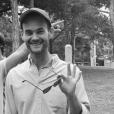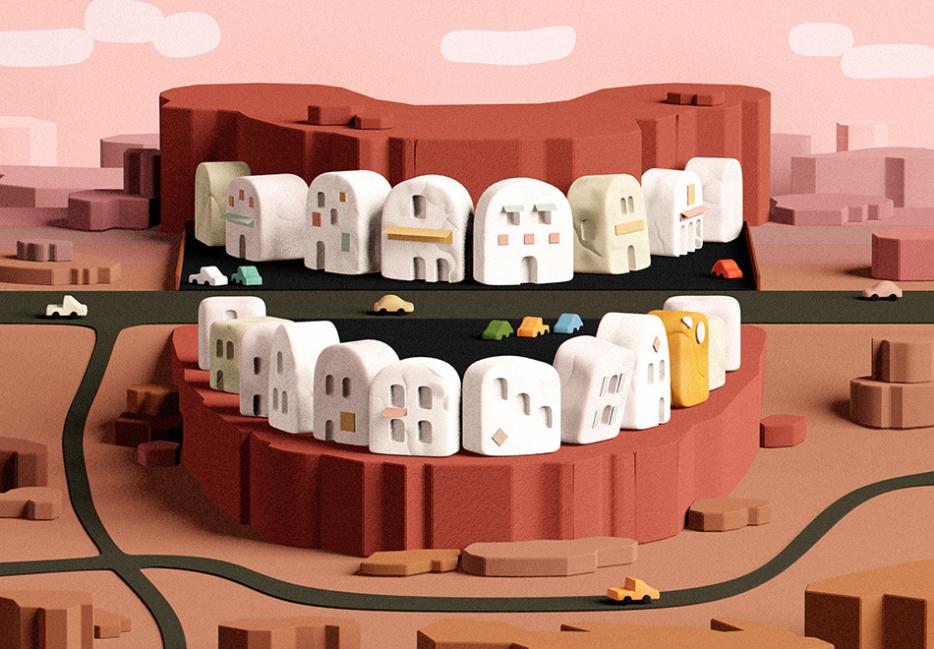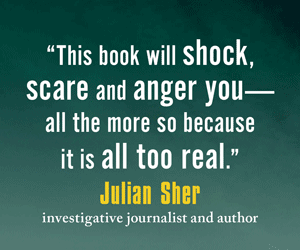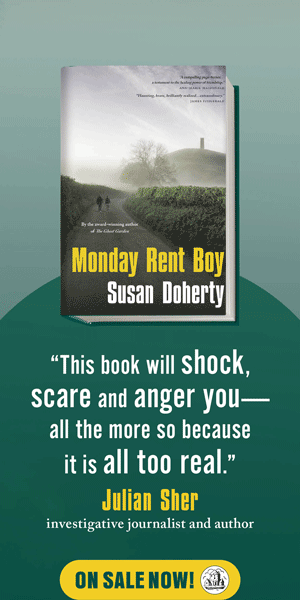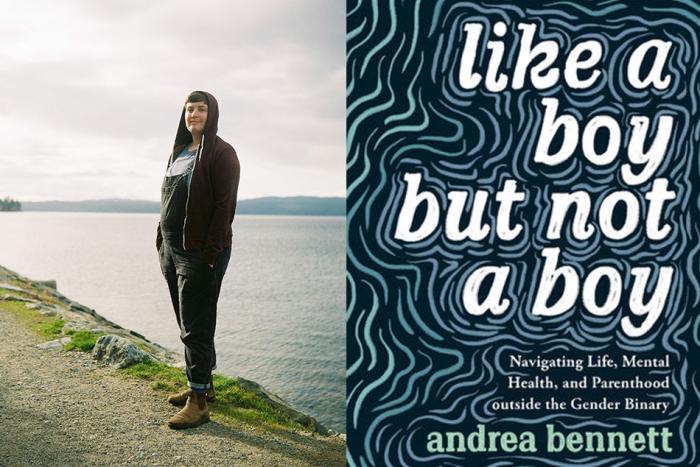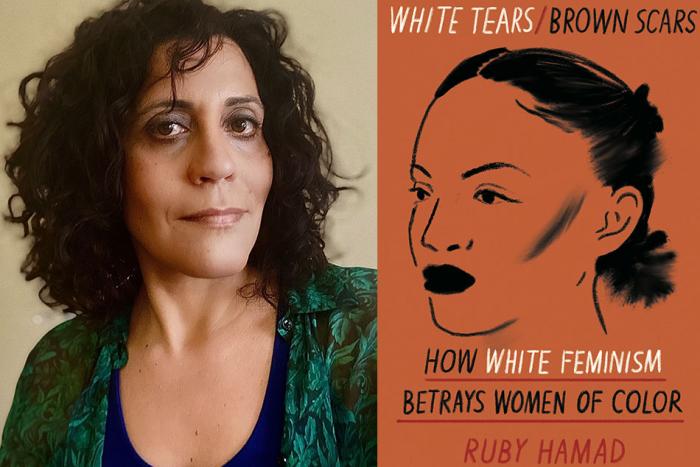You’d be surprised how many reasons people have to go to Yuma, Arizona. They go for the weather, the four thousand yearly hours of baking sunlight. They go for the casinos, rising up by the highway on the lands of the Quechan and the Cocopah. They go to witness the arsenal of the largest standing army in the world at the Yuma Proving Grounds, where mortars and brimstone missiles pummel the Sonoran Desert. And then there are people who go for the same reason I did: because they’re afflicted with aching and rotting teeth, with broken molars and crooked gums, mouths full of pain that follow them around like debts. Because just across the border from Yuma, so close you can walk it, is Los Algodones—Molar City. The dental tourism capital of the world.
Every year roughly 120,000 Canadians and Americans cross the border into Los Algodones. There they spend millions of dollars on dental care that costs a fraction of what it does back home. The town’s population hovers around five thousand, but it’s home to over five hundred practicing dentists who power the local economy and contribute to the booming global medical tourism industry.
Medical tourism is a deceptively sunny phrase for the lengths a person will go to escape their pain. It’s a type of migration that can only exist under certain asymmetries of care and certain conditions of capitalism. When health is a commodity it feels realer the more dearly you have paid for it. But medical tourism is the inverse: health as a bargain, health as a matter of exchange rates. Health as a gamble.
***
In her novel The Story of My Teeth, the Mexican author Valeria Luiselli describes: “The teeth are the true windows to the soul; they are the tabula rasa on which all our vices and all our virtues are inscribed.”
It’s true you can learn a lot from teeth. From the flattening of canines you can learn when ancient cultures transitioned from hunting to agriculture, and proof of famines has been discovered in the hypoplasias on the enamel of the dead. You can tell who ate with their fingers, who lived in the rain shadow of a mountain, who dined on the sacramental nectar of a child deity. Teeth are a biography in the macro, stamped with facts about ourselves that are barely recognizable from the vantage point.
The story of my teeth is relatively simple: they’re expensive and they break often. Some people buy Rolexes that keep worse time than a microwave, I pay for teeth that don’t work. I’ve had some two-dozen-plus cavities filled, two root canals, my wisdom teeth extracted, my enamel soaked in fluoride gel, all costing somewhere north of twenty thousand dollars. Some of this I’ve paid out of pocket, some has been covered by insurance via my partner or jobs. I’ll likely have to spend almost as much on more work imminently, though it’s less certain how I’ll pay for it.
I think of my teeth as a kind of debt. Even the archaic word for cavities—caries—implies shouldering a burden. Anyone who’s carried debt knows the way it can discolour a life, forcing a sense of foreclosure onto reality, making disaster feel inevitable.
***
The morning of my first day travelling to Los Algodones, I woke up in the Quechan Resort Casino with a toothache. The pain emanated from my maxillary second molar, the four-cusped workhorse that allows mammals to chew. My molar was at this point less of a tooth than it was a tiny cairn of crumbling enamel, ruined by cavities to the extent that it could no longer support a crown. The last fragment broke off on a cherrystone a few months before; I remembered holding the fragment over the kitchen sink, cherry juice staining it like blood.
It had ached while I travelled: on the plane from Toronto, in the glassed-in smoker’s pen at Washington Dulles airport, during the stopover in Dallas, and again during the one in El Paso. It had ached as I sat in the back of the Uber that drove me from the Yuma airport through the darkened desert to Quechan reservation. I asked the driver if he had ever been to Los Algodones and he told me he was a Marine stationed nearby, and they weren’t allowed to cross the border.
Outside my window I could see the pool and the parking lot with its knuckled palm trees, dotted with RVs. Beyond that, the expanse of the desert: endless miles of creosote and broken rock. It was late February, the end of snowbird season and the beginning of long months of unendurable heat. One state north, Bernie Sanders was trying to take the Nevada caucus and bring the country closer to a nationalized system of healthcare than it had come in a century. Less than a month later a global pandemic would make the idea of getting on a plane or crossing a border terrifying.
***
In the lobby I was greeted by the tidal hum of slot machines. The Quechan Casino feels less like a palace of sin than it does a server farm: a dim, air conditioned, and windowless silo where machines chirp and flash as they extract your money with a ruthless, algorithmic efficiency. Cigarette smoke rose towards the ceiling and the ATM charged $7 per withdrawal.
Outside, the desert air was hot and bacterialess. If the interior of the casino suited tooth pain, a midnighter’s disease, this was dentist country, the sun bright and lidless as a headlamp. The road ran alongside a narrow creek, choked with river grass and paddled by cormorants. This, I realized, was the Colorado River. This was where one the mightiest rivers in the world, the one that fills the Grand Canyon and powers Las Vegas, limps free of the continental United States and into Mexico, dissipating in a brackish delta of mudflats and sandbars. At Hoover Dam, the impounded waters of the Colorado power turbines that weigh hundreds of tons. A day’s drive south and you could throw a stone across it.
The enamel of a tooth is made up of millions of microscopic prisms, arranged in rows. Stacked together like a woodpile, they form the hardest and most inorganic substance in the body, a mineral explosion driven by the aggregate electrical current of cell clusters that start to conspire long before we’ve even developed spines. They’re a foreign substance, only partially organic and generated by a flourish of primeval chemistry. They aren’t flesh, but they can hurt like flesh. You can go into debt over them like flesh. You can find yourself crippled by them like flesh.
***
The Andrade Port of Entry is the lowest volume border checkpoint along the U.S.–Mexico border. The Trump administration’s vision of a border wall hangs over the Southwest like a hallucinatory fantasy, and you can see evidence of it close to Yuma, where construction was recently completed on over two hundred miles of new fencing, a corrugated monstrosity that resembles a Richard Serra sculpture. But at the Andrade Port, the border is little more than a length of barbed wire fence and a few crumbled concrete outbuildings. A Quechan-run parking lot allows crossers on the U.S. side to park their cars before walking through a narrow passageway and into a shed, ostensibly our last few steps on American soil. Inside there were no questions, no declarations, no people in uniforms wielding rubber stamps. Just an unplugged metal detector and a dog dozing in a wire cage.
It doesn’t feel like a place at all. Which is a condition it shares with all borders: feeling separate from the locations they straddle, the last breath between them but unclaimed by each.
Modern medicine views the mouth and the teeth inside it the same way. That’s why an annual physical almost never includes a look inside your mouth; it’s less a part of a body than a front gate. But in her book Teeth, Mary Otto explains why this is hubris: “Pain, loss of function, serious illness, and even death result from untreated oral conditions and offer harrowing reminders that the mouth is part of the body and that oral health is essential to overall health.”
Dental care is rarely included in conversations about expanding rights to accessible medical care or in the medical industries schemas of health, despite the fact that tooth decay afflicts almost half the population of Earth, and global spending on dental procedures outstrips that of cancer treatments or vaccine research. The mouth’s living tissue is home to millions of microflora and organic systems, varied ecologies, and bacterial cultures that pass through it to the body to provide its life-giving balance. There is no possibility of living without that variety, that puncture between the inside and the out.
***
It’s hard to imagine how truly full of dentists Los Algodones is. It’s like trying to imagine a city full of piano movers. They are, quite literally, everywhere. Memories of inconveniently scheduled cleanings quake in the face of the omnipresent availability, the frantic, logicless convenience. They line the streets, sit atop one another in stories, share entrances. The sky in Los Algodones looks down on a canopy of signage, emblazoned with Xeroxed grins. Clinics compete for claims: the quickest, the cleanest, the most painless, the most popular service in town. As soon as I set foot past the border checkpoint I was greeted by men in medical scrubs, construction boots poking from beneath their airy blue pant legs, who thrust pamphlets and flyers in my hands. One man strolled in lazy circles wearing a sandwich board that advertised veneers.
In my long history of dental work, I have never once been told the cost of a procedure before agreeing to it. In the dentist’s chair with a broken or infected tooth, you don’t feel like a customer; you feel like someone being offered a lifeline out of medical catastrophe, and only a lunatic would think about money at a moment like that. Better to think of it afterwards, with your mouth swollen and bloody, waiting to see if your credit card is declined.
In Los Algodones, however, competitive pricing is the order of the day; it’s on signs and on the flyers shoved into your hands and yelled to you from storefronts. Having a tooth pulled costs roughly $50 USD, about as much as a carton of Duty-Free cigarettes. A dental implant, in which the living root of a tooth is replaced by a metal screw and topped with a prosthetic lump of fused porcelain, runs about $1,600 in Canada and as much as $4,000 in the U.S. (I know because I desperately need two that I haven’t been able to afford to replace the crumbling temporaries following root canals). In Los Algodones they cost around $450, which means I could rebuild one side of my mouth and come out better than if I were to accidentally drop my phone.
All this made me feel suddenly, drunkenly rich. I didn’t feel like someone who had flown across the continent on a long shot, but instead like a tourist, secure in the sudden radioactive potency of my currency. I walked with the thin, late season crowd through the streets, numbers dancing in my head. All around me, sunburnt couples strolled, boozy, willing to loiter in their relief. People haggled over the price of Harley Davidson wallets with street vendors, while other vendors across the street selling identical Harley Davidson wallets watched. I stopped in a restaurant where a mariachi band listlessly played a Don Henley set and the bar sagged under gallon jugs of margarita mix crowned with upended tequila bottles. Around me, people drank heavily through swollen jaws. The various accents of the continental U.S. cut the rudiments of Spanish vocabulary into starchy chunks. Hawkers walked between tables, selling hammered tin star fish, tequila bottles shaped like revolvers, cigars, ponchos done up to look like NFL jerseys. Maybe this is what borders are, I thought, places where commerce and commodities and junk and medicine all collect, washing together like flotsam at an inlet.
***
Dentists in Mexico are able to offer such cutthroat prices for the same reason it’s easier to buy a pair of Levi’s that are made in Istanbul, or a casserole dish that was assembled in Thailand. The inequities between its national economy and the global superpowers in the West mean that the costs of production and wages are astonishingly low compared to the U.S. and Canada. But Mexican dentists also benefit from subsidized training, which means they don’t graduate saddled by enormous loads of student debt. And in Mexico, dentists are not required to have malpractice insurance, which can cost Canadian or American dentists thousands of dollars per year.
This last point is what makes getting your teeth fixed in Los Algodones possible, but it’s also what makes people wary. On internet forums and Facebook, users exchange recommendations and tips with other medical tourists, and there are a minority of horror stories. People have exchanged the pain of broken teeth for the pain of bridges that aren’t correctly set, or implants that come loose. But that’s a risk you run in Canada or the United States, too.
The question of why dental care is so expensive in Canada and the U.S. requires some explanation. Dentistry has historically sat adjacent to respectable medicine. The first dentists were itinerant surgeons who worked in city squares rather than in medical colleges. They represented a medieval tradition of travelling cures, and a dentist in the 18th century might as likely be a mesmerist, or an applier of leeches, or a peddler of mercury tonics. At their best, they were individuals gifted with a combination of salesmanship, common sense, and a stomach for gore.
This made it unattractive to physicians, who emerged from the same quagmire of competing cures but managed to elevate their own professional standing, not least via the exclusion of other practices. As a hierarchy of human physiology developed, divided, and subdivided into territories of expertise, the mouth and those that worked on it were excluded. Charles Harris, the father of American dentistry, made attempts to integrate dentists into medical colleges during the mid-1800s and was rebuffed. This, even as breakthroughs in science had shown the way that a rotten tooth might transmit infected blood to the brain, and how bacteria and unicellular organisms travelled through the world like a second kind of air, dashing the notion that health could be separated from the environment, or that the body could be segmented into higher and lower orders of importance.
This division has had lasting, deleterious effects on the way we think of health, how we conceptualize care, and who deserves it. It’s why potentially life-saving dental treatments like extractions and root canals are often considered “cosmetic” by insurance companies. It’s also part of why people are often embarrassed and ashamed by the state of their teeth. Tooth pain is viewed more as a matter of personal failing than it is a matter of public health, which obscures the way systemic inequity keeps treatment away from the people who need it. As the writer Sarah Smarsh says: “Poor teeth, I knew, beget not just shame but more poorness: people with bad teeth have a harder time getting jobs and other opportunities. People without jobs are poor. Poor people can’t access dentistry—and so goes the cycle.”
Physicians and dentists may not sit at the same table, but the diseases they treat do. The bodies we inhabit suffer for their division.
***
I am generally a risk averse person, because I’m at least partially convinced that I’m an idiot. When confronted with two conflicting pieces of information (when one Tripadvisor user says a Los Algodones dentist saved their teeth and another says they subjected them to hours of unnecessary pain, for instance), I tend to spend less time making sober appraisals than fearfully contemplating the perfect reality trap that allows facts to exist in the multiple.
Days in Los Algodones were disorienting, with its hallucinatory specificity, the way it makes you imagine human teeth being swept out like barber’s clippings at the end of the workday. After I had visited as many dentists as I could, I would walk out of the central commercial district and into the residential neighbourhoods: quieter, sparser streets that had more of the desert backdrop leaking into them. Children played in dusty parks and stray dogs lay around, blinking into the sunlight. I took pictures of a stack of life-sized Spider-Man pinatas stacked in front of a storefront and ate a plate of lengua tacos.
I walked back to Los Algodones three times. I picked dentists based on reviews found on forums and at random. Some were glitzy operations, with large staff and on-site hotels where patients could convalesce in the jacuzzi. Others were less familiar. The first dentist I visited was in a concrete bungalow painted with lucha libre wrestlers. Inside, wrestling masks hung from the walls, and the owner, an old man in a brown suit, dozed in his dentist’s chair. When he woke up, he sat me down and readied his tools. I scrutinized the diplomas on the wall, which I couldn’t read anyway. I explained to him the history of my teeth, and he nodded patiently, then made the universal gesture for “open up,” making a large O with his mouth and going aaaahh. When he brought the circular mirror and the probing hook towards me, I flinched. I thought about how far from home I was. I tried to tell him, to reiterate: my teeth hurt. They’re swollen and broken, and I was afraid some were turning grey, but most importantly, they fucking hurt. Hurt when I breathed winter air and ate certain foods. Sometimes they hurt so unpredictably that I woke my partner in the night, near-blind with pain. Please, I told the dentist, be careful.
And he was. He found the ruined fillings and the cankered flesh, touched them but withdrew when I flinched. Then he tore a page out of a magazine and wrote down everything I would need to fix them. Extractions, roots canals, implants. Potentially a sinus lift, which is where the gums are peeled away and the bones of the jaw artificially grafted, millimetre by millimetre. This was essentially the same thing prescribed by dentists back home, only in this case he wrote down the prices as well, in neat columns like a receipt from the grocery store.
Walking back into the United States takes a lot longer than leaving it. During the peak season, the wait can take hours, as the tourist rush mixes with Mexican citizens who travel back and forth across the border to work on massive agricultural farms during the winter harvest. In line I checked estimates on the U.S. Customs and Border Control’s official app and looked around at the others waiting, trying to spot evidence of bridge insertions and sinus lifts. When the border agent asked me if I had anything to declare, I imagined my future self splitting into a wide grin to display row upon row of pearly, industrially white teeth, fixed to my jaw with titanium composite screws.
Arriving back at the hotel at the end of the day, I began to notice something. It was there as I walked across the casino floor: a prickling in the air, and an electric current of risk. The chemical sense of chances both desperate and considered being taken, life savings and the bone white coins set into living flesh, all pushed forward onto the table with the immense desert at your back.
But in the end, I didn’t let anyone fix my teeth in Molar City. Whatever feeling of wealth I possessed evaporated when it came time to put some money down. Gambling gives you a feeling of unaccountable wealth right up until the moment you actually place your bet, at which point you see the hard material kernel of your fate taken out of your hands. Sitting in my hotel room comparing prices, I wasn’t confident that I wouldn’t spend too much on the wrong thing. Less a gambler than an idiot. If anthropologists were to unearth my dental remains a thousand years hence, I wondered what conclusions my teeth might contribute to: a snapshot of a rapaciously commodified healthcare system? Evidence of a needless bifurcation in the care of a whole self? Errata from the brink of a pandemic? Or just the deviance of an individually inattentive, unhygienic person?
I didn’t want to admit it had gotten that far. Since then, nothing has changed that hasn’t gotten worse. The teeth that hurt still do, more impudently or just more often. I don’t have insurance anymore, but I hope to soon. I nag myself to make appointments.
***
People dream of their teeth falling out all the time. Books say these dreams are usually about money. Once, while waiting to get an emergency root canal, I found myself in an enormous luxury mall. It was close to the office of the only oral surgeon who could fit me in, so I walked around and watched people buy rose gold phones, GORE-TEX jackets, Swiss watches. I felt the immense cushioning of non-emergency spending around me through a fog of sleeplessness and painkillers. In the food court I stared at an enormous light sculpture and thought about the money I was losing taking time off work and trying to remember the details of my health insurance. I wondered why my teeth failed so reliably, while on YouTube I could watch a man pull a school bus with his.
When I finally collapsed into the surgeon’s chair, he asked me if I wanted nitrous oxide for the procedure. Nitrous is an odorless, colourless gas that produces euphoria upon inhaling. It separates your head from your body, making everywhere down there seem supremely uninteresting. Might as well be watching someone reset a Wi-Fi router. It’s an incredible luxury to be able to watch surgery of your own body with disinterest. It’s so rich it makes sense to me that you can only absorb it in aerosol, mixed in with equal parts oxygen.
When the oral surgeon fit the snug little helmet over my nose and turned the valve that released the nitrous, I fell backwards into the purest kind of oblivion. I heard the drill that broke up the dead tooth I could no longer feel. It sounded like billiard balls being pocketed. I felt the oral surgeon force a metal wire into the decayed pulp of the tooth, beneath the mineralized enamel, into the pure root of the tooth. It felt like someone tugging on my shirt sleeve. After the decayed root is removed, an antimicrobial, allergen free cement is poured into the gum, sealing it off. That’s the end of organic life there, the evolutionary layers of calcified balance replaced with ceramics and alloy.
The day I flew out of Yuma and back to Toronto, I met a man in a Mexican restaurant. He interrogated the waitress about his order, specifying that he could only eat something soft, which made me suspect he had just come from Los Algodones. We talked a bit about the dentists we’d visited and exchanged the kind of vague but gregarious biographical detail you do when talking to strangers. When I told him I was from Toronto he told me he had once visited there and bought a sumptuous length of blue velvet, decorated with nebulae and comets. He said he was a wizard, which I assume is something like a magician. He chewed his enchiladas delicately. After I left the restaurant, I waited for the bus in front of an abandoned hotel, watching a train carry tanks and army jeeps through town.
I still dream of rows of perfectly arranged, decay-free teeth. In my mind’s eye, it’s unclear whether these teeth are artificial or simply imported from another life. The distinction matters less the more I think about it. What matters, the crux of the fantasy, is that these teeth would be completely unreadable. No record of life discernable from their striations, no history of injury or patterns of migration. No price tag, which is how you’d know they were really expensive. They would be so perfect, the material so elegantly arranged and the surfaces so smoothly uncommunicative that they would offer a future observer no information about the body they were embedded in. They would be objects of pure luxury, gleaming and mute down to the cellular level.

